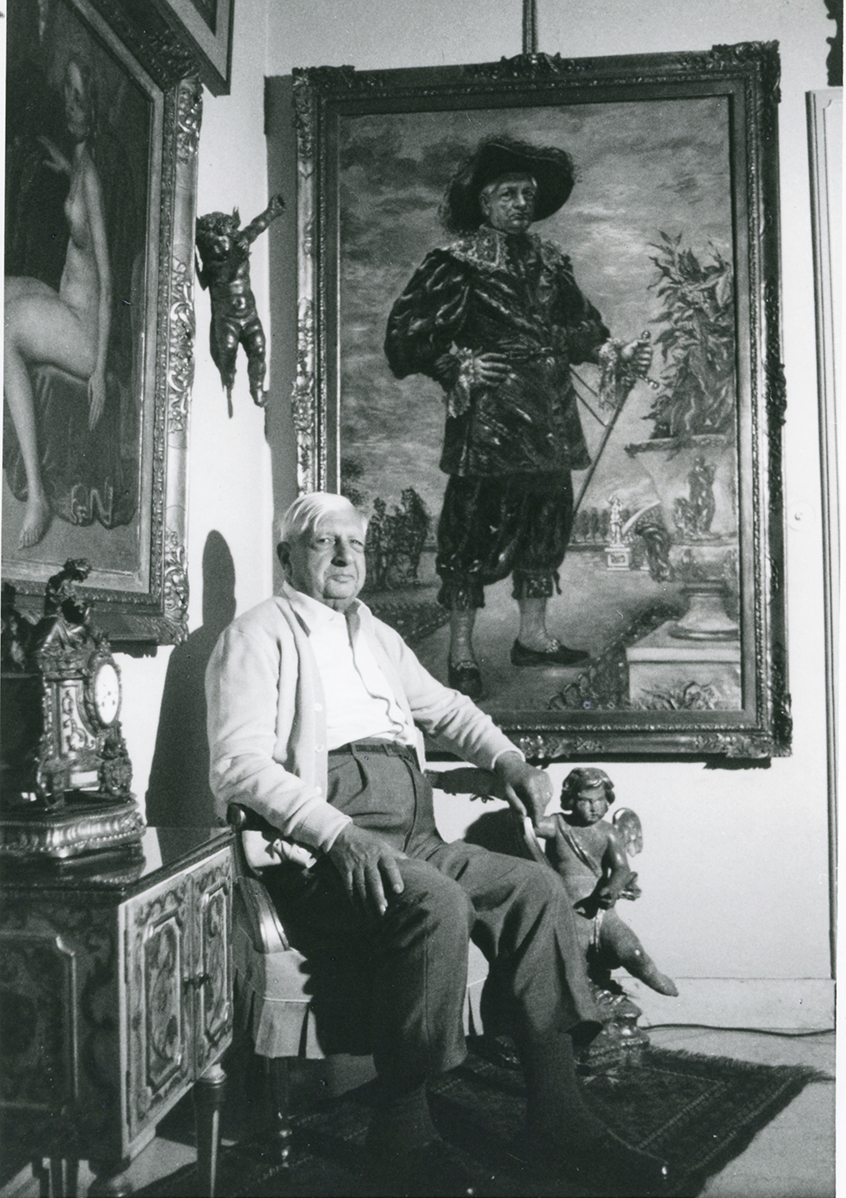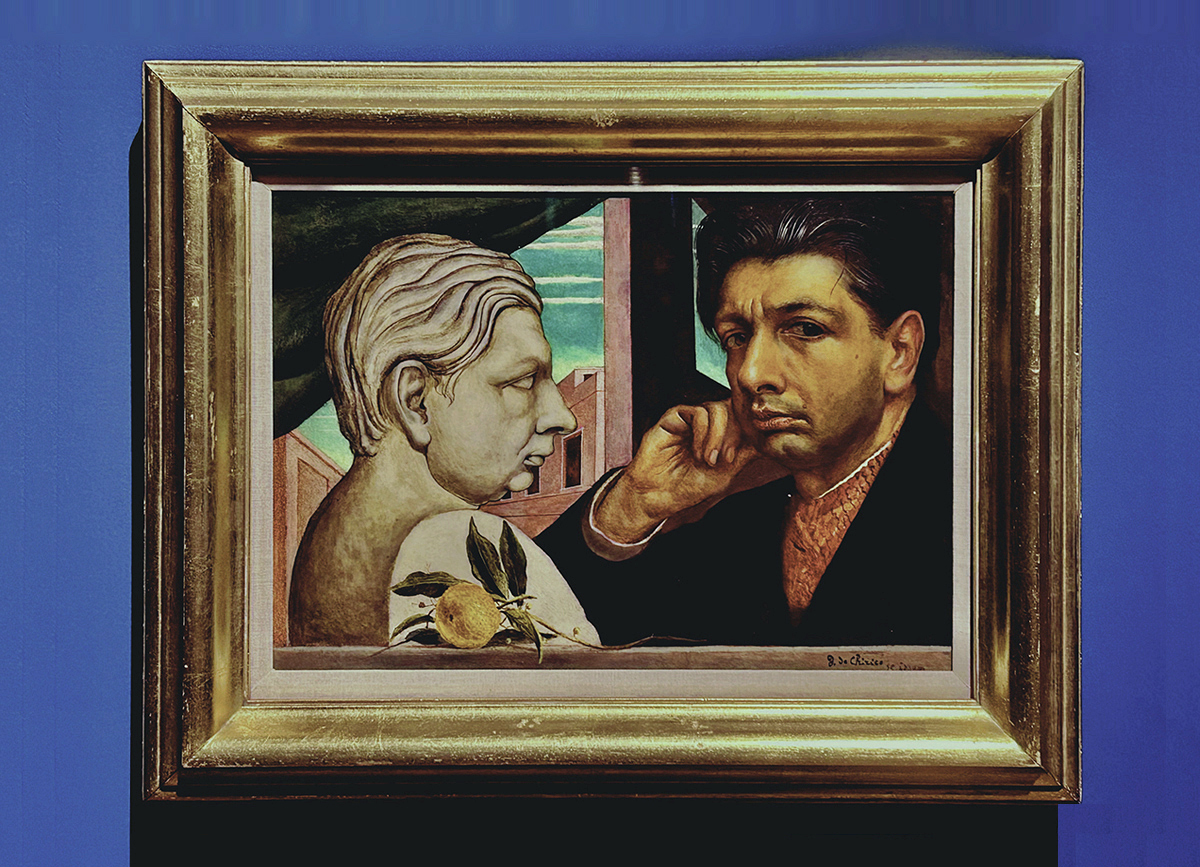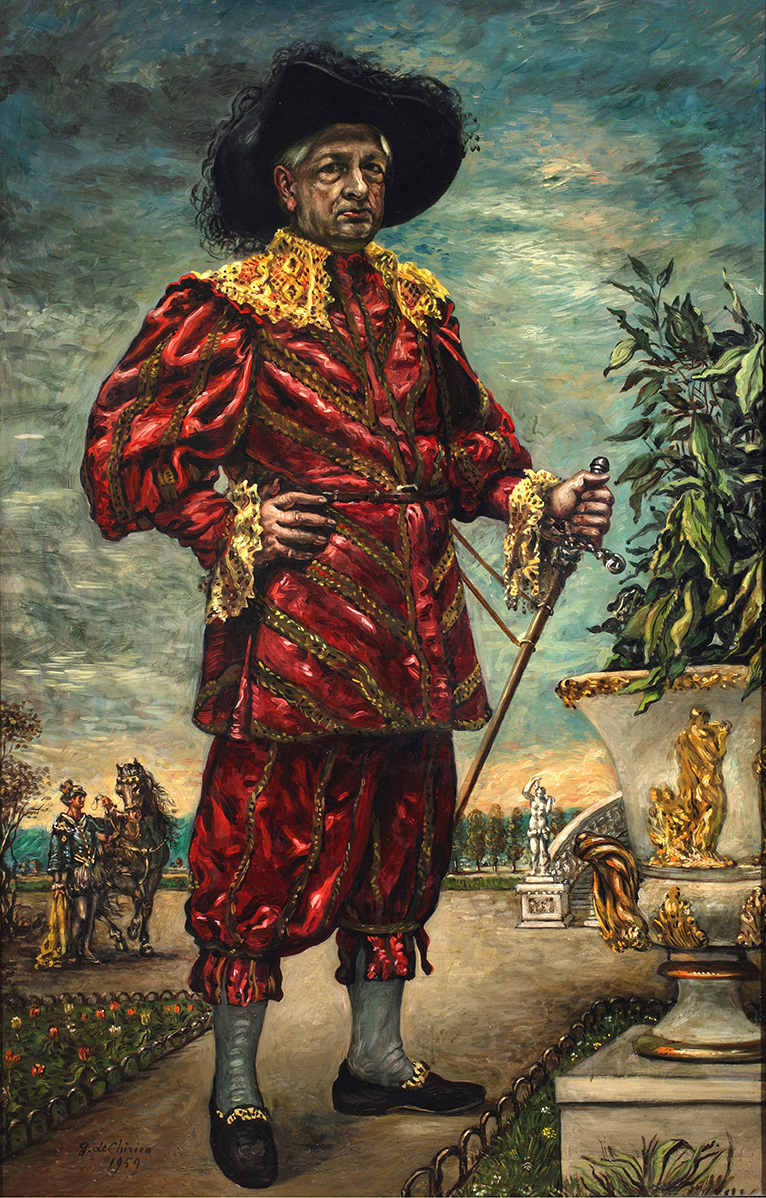GIORGIO DE CHIRICO: METAPHYSICAL JOURNEY
HAPPENINGText: Alma Reyes
The term “metaphysical painting” did not come to light until 1910 when it pertained to distorted perspectives, enigmatic landscapes and symbolic imagery. The originator of the style was Giorgio de Chirico whose focus on fantastical atmospheres, unrelated objects, and dreamlike scenarios enormously impacted Surrealists, such as Dali and Magritte. Unlike contemporaries of his time who adopted French Impressionism, de Chirico rather followed Symbolism. Having studied art in Munich, he was greatly inspired by Arnold Bocklin, Max Klinger, and German philosophers like Friedrich Nietzsche.
Presenting the artist’s first major exhibition in Japan in ten years, “Giorgio de De Chirico: Metaphysical Journey” is being held at the Tokyo Metropolitan Art Museum until August 29 this year.

Giorgio de Chirico poses in front of “Self-Portrait in the Park with Seventeenth-Century Costume”, 1968, Fondazione Giorgio e Isa de Chirico, Roma © Giorgio de Chirico, by SIAE 2024, Photo: Walter Mori
The large-scale exhibition covers around 70 years of de Chirico’s splendid career, highlighting more than 100 pieces of paintings, sculptures, illustrations, and stage costumes loaned by Giorgio and Isa de Chirico Foundation in Italy, as well as private collections from other foundations and Italian and international museums. Some of these are Uffizi Galleries in Florence, Staatliche Museen in Berlin, MoMA in New York, Nakanoshima Museum of Art in Osaka, and others.
The wonderful showcase, which also opens in Kobe from September 14 to December 18, was curated by renowned art historian Fabio Benzi. Visitors are transported to complex stages of the master’s life — from his early self-portraits, the core of metaphysical painting, interpretation of plazas and interiors, mysterious baths, famous mannequins, bronze sculptures, theatrical costumes, return to classical art, and emergence of Neo-metaphysical painting.

Giorgio de Chirico, Self-Portrait, c. 1922, The Toledo Museum of Art, Toledo (Ohio, USA) © Giorgio de Chirico, by SIAE 2024, Photo: Alma Reyes
As one walks through the gallery corridors, arched partition walls glow in yellow, green, and rust colors just as they shine in many of de Chirico’s paintings. The first section reveals de Chirico’s curious self-portraits and portraits of friends, family, and acquaintances. The artist achieved hundreds of them, many of which insinuated the classical approach. In Self-Portrait (c. 1922), he presented himself as his real self, and also as an antique bust glaring at him. The cross-reference outlines the artist’s dialogue with history.

Giorgio de Chirico, Self-Portrait in the Park with Seventeenth-Century Costume, 1959, Fondazione Giorgio e Isa de Chirico, Roma © Fondazione Giorgio e Isa de Chirico, Roma © Giorgio de Chirico, by SIAE 2024
Similarly, Self-Portrait in the Park with Seventeenth-Century Costume (1959) dresses himself in Baroque mode as though performing on stage. In the background are mythological elements, such as a horse and heroic figures; painted against a landscape commonly found in ancient lithographs.
Read more ...




